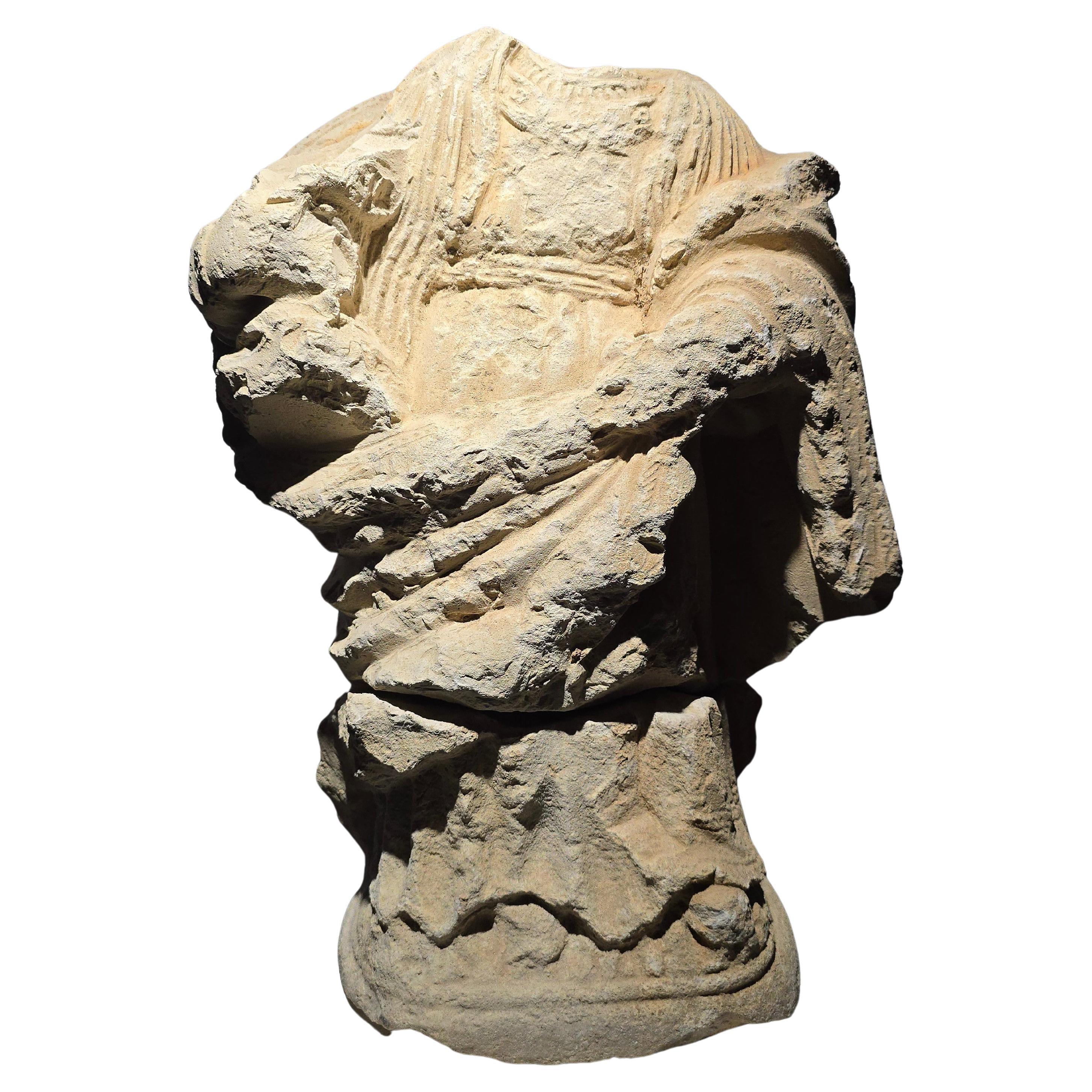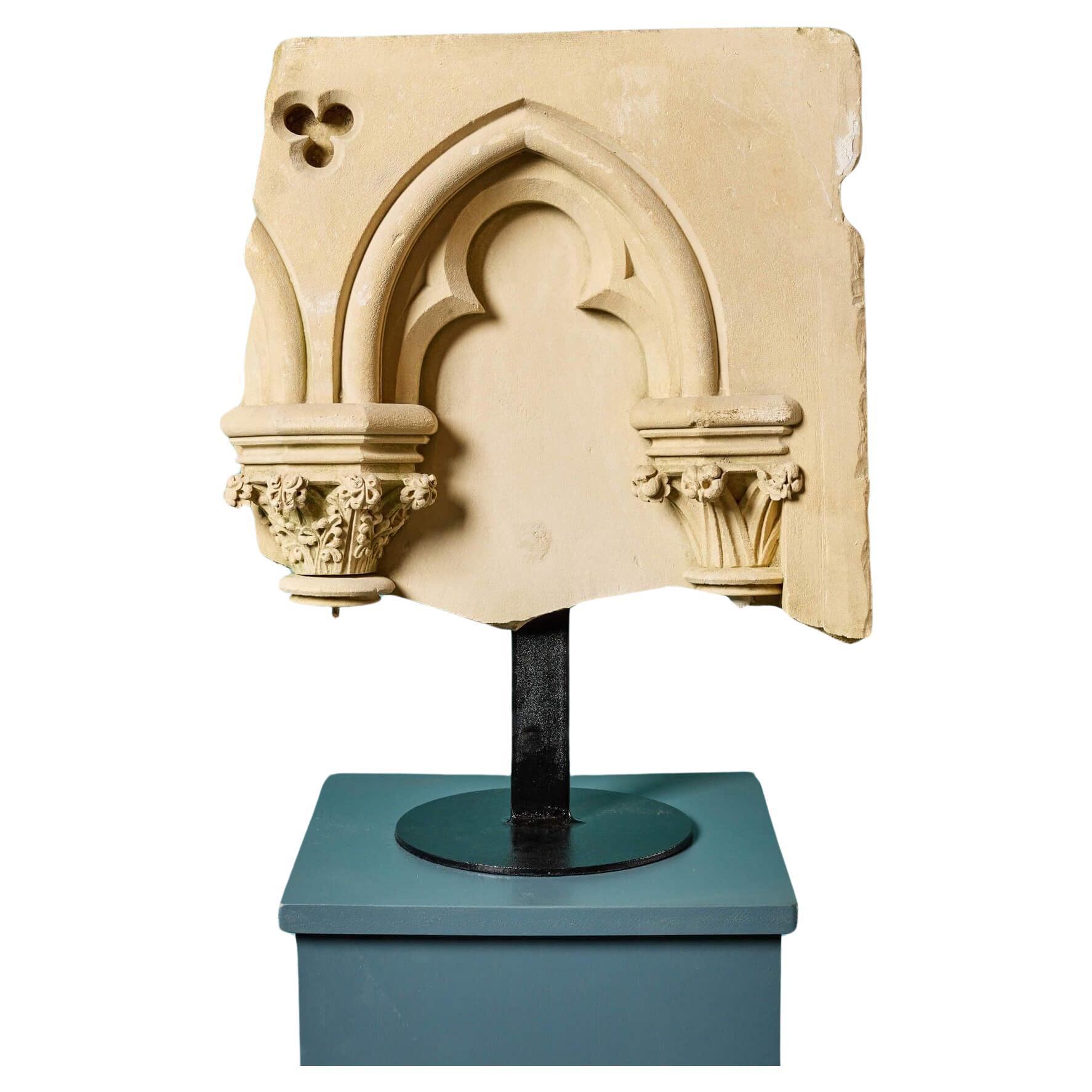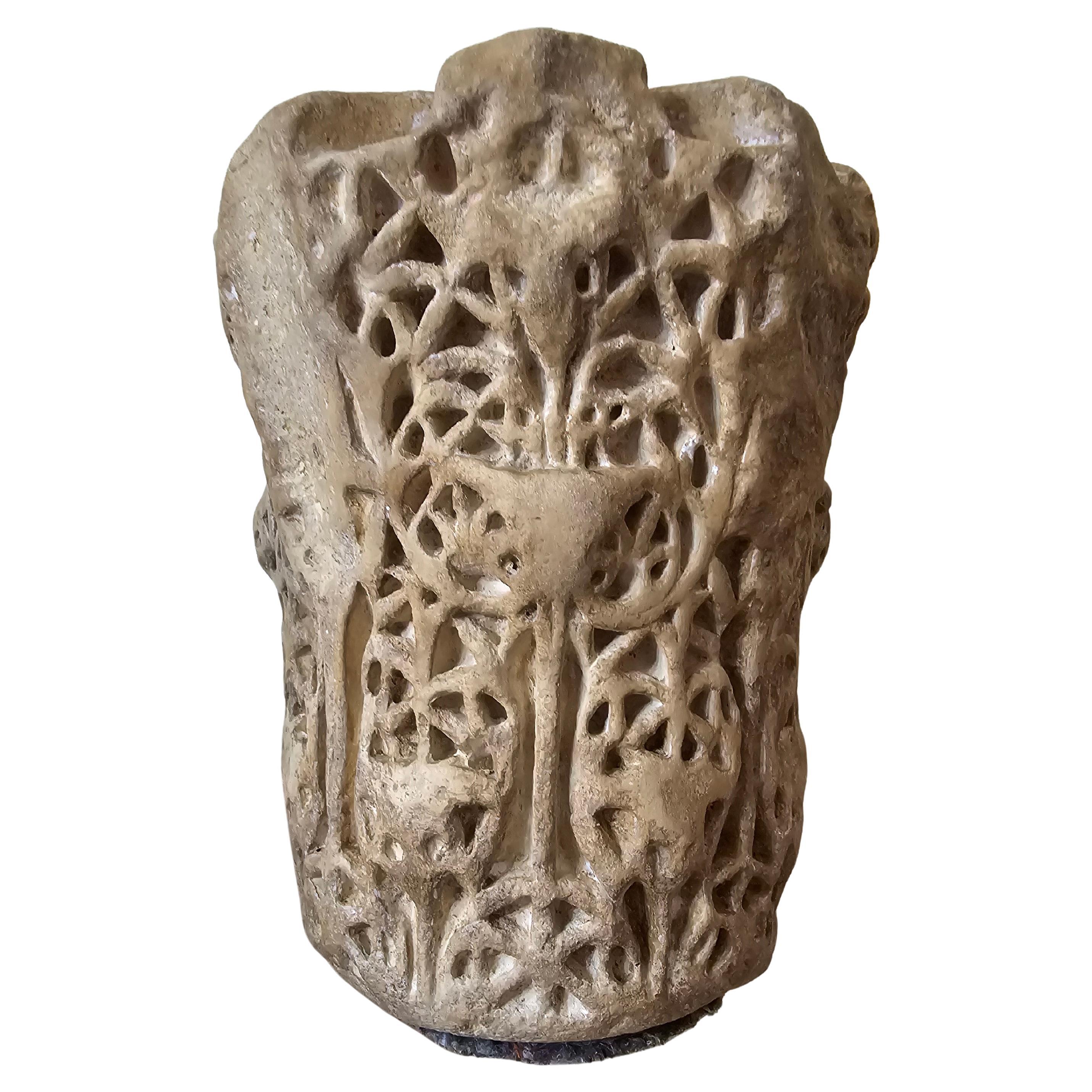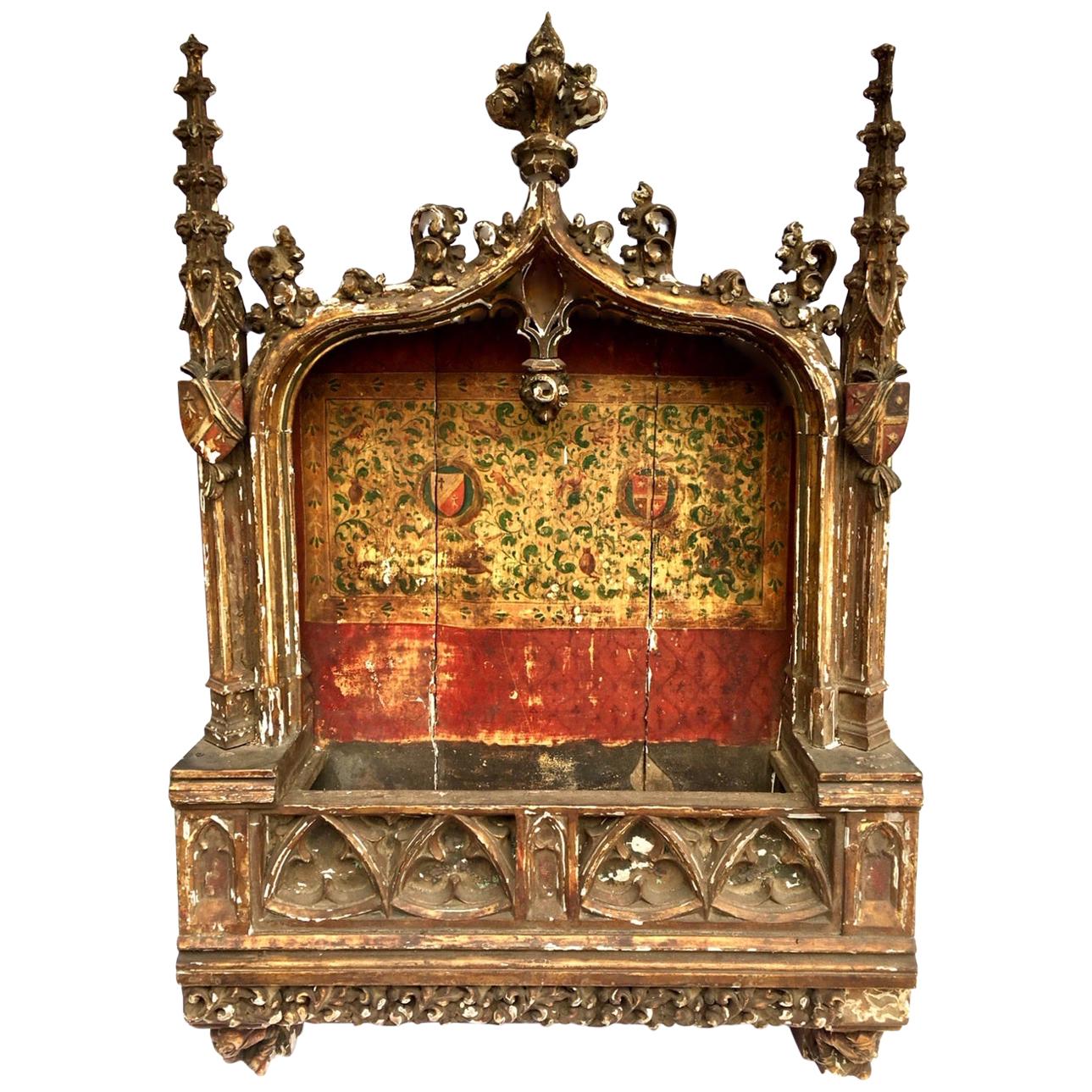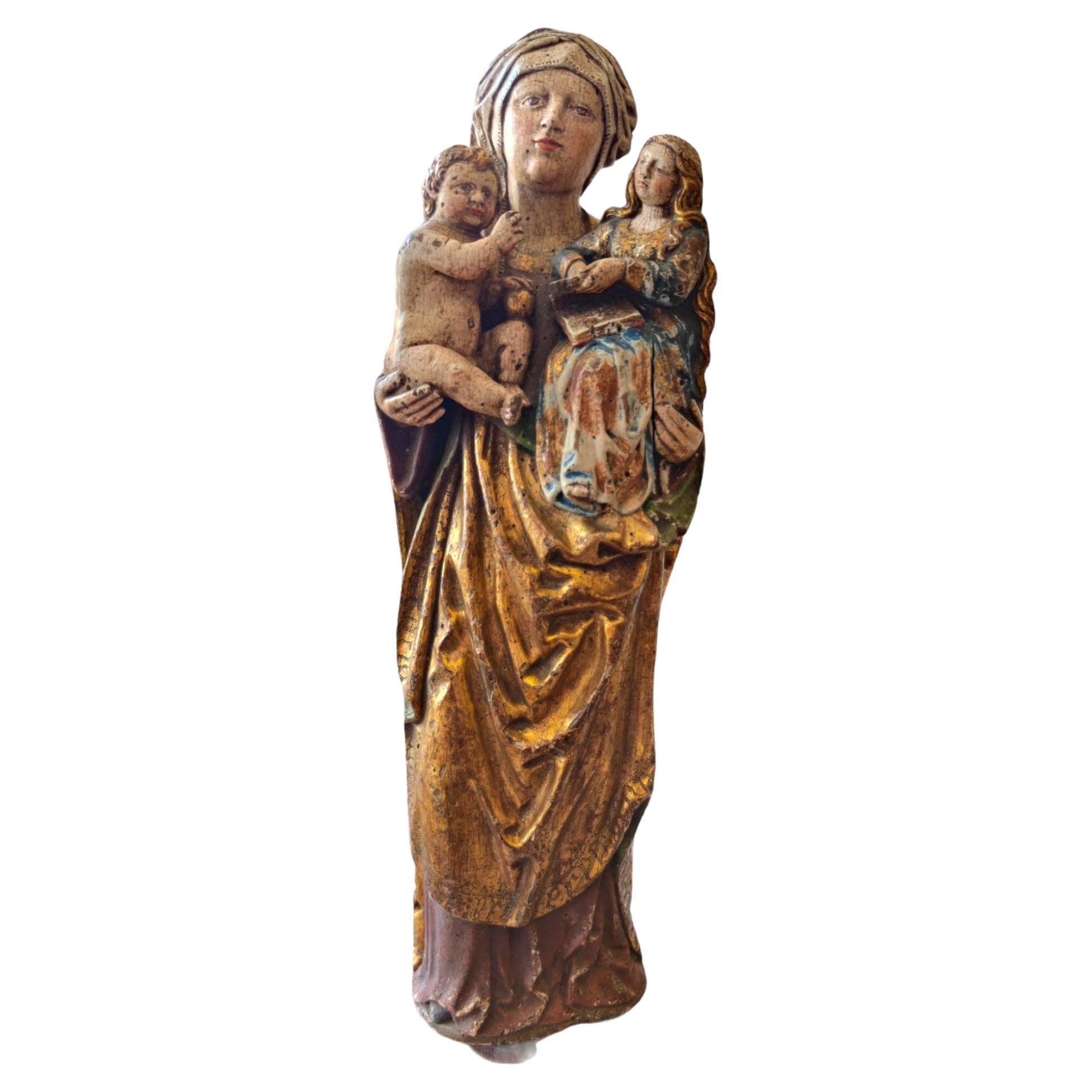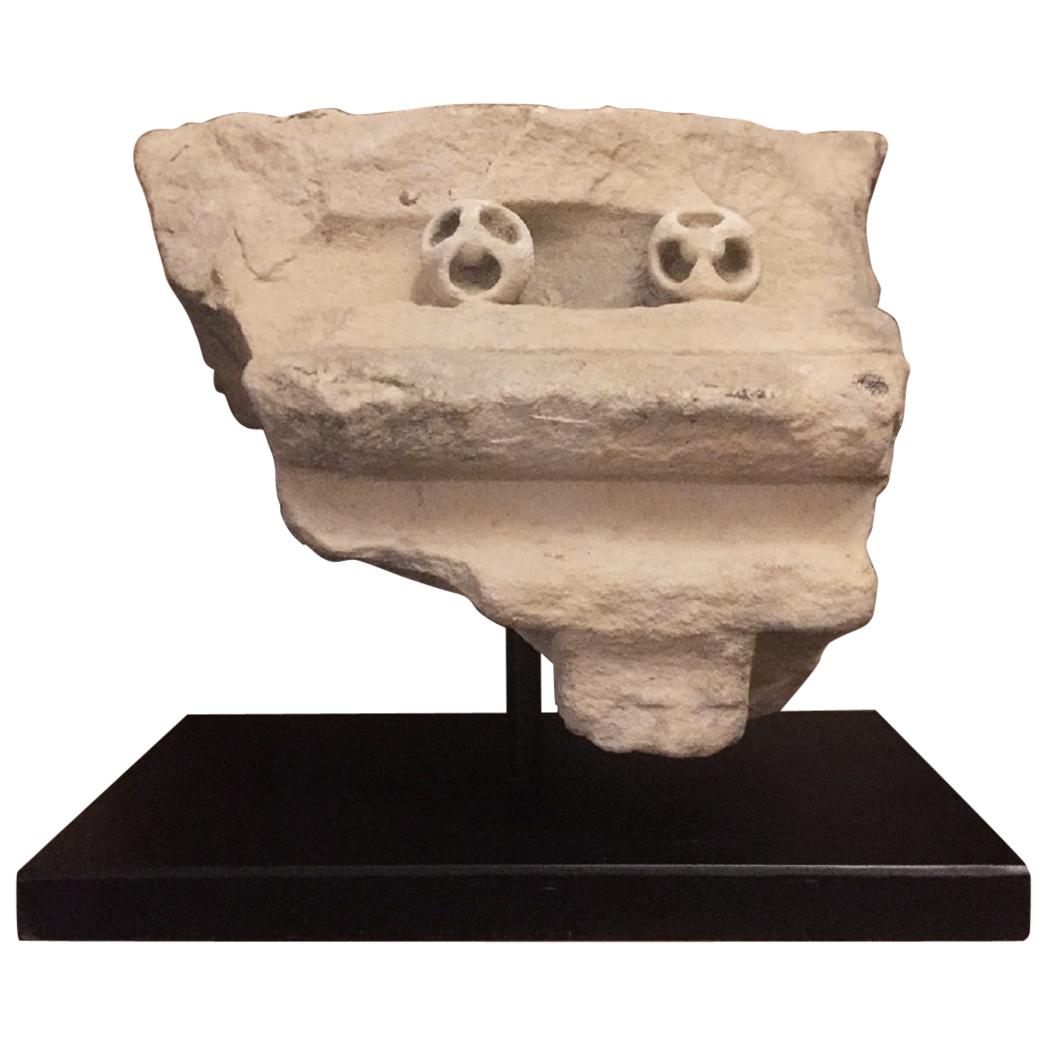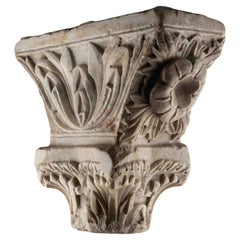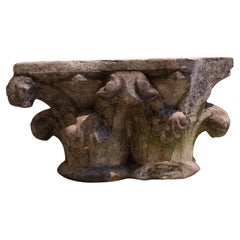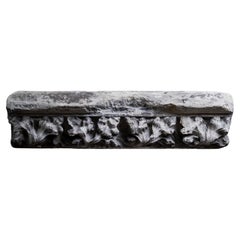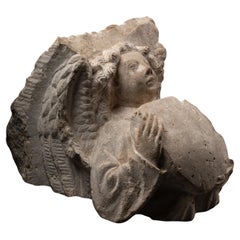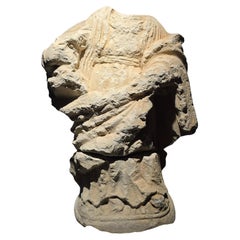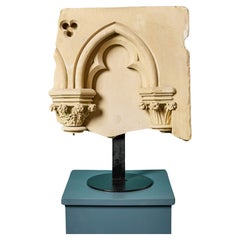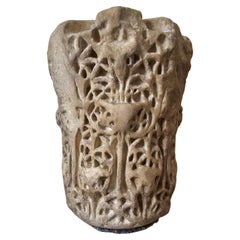Items Similar to Gothic Canopy, France, 15th Century
Want more images or videos?
Request additional images or videos from the seller
1 of 5
Gothic Canopy, France, 15th Century
$23,586.16
$29,482.7020% Off
£17,654.83
£22,068.5420% Off
€20,000
€25,00020% Off
CA$32,461.28
CA$40,576.6020% Off
A$36,181.48
A$45,226.8520% Off
CHF 18,983.18
CHF 23,728.9720% Off
MX$441,834.82
MX$552,293.5220% Off
NOK 240,368.33
NOK 300,460.4120% Off
SEK 227,184.63
SEK 283,980.7920% Off
DKK 152,254.09
DKK 190,317.6120% Off
About the Item
Gothic canopy
France, 15th century
Alabaster, some traces of polychromy
33 x 23 x 20 cm
Provenance:
- Private collection Genève, Switzerland
This masterful, three-sided canopy is carved in the Flamboyant style, which first developed in France in the 14th century.
The tracery is composed by micro-architectural pinnacles decorated by crockets; the underside of the canopy is decorated by a groin vault which suggest that the canopy would have originally surmounted a figurative sculpture, creating a micro-architectural space for the statue to inhabit.
The survival of traces of polychrome suggest that it was probably protected by a roof or by a deep porch. Such canopy were commonly located on portals but they were also often inside of churches, over tombs or in private chapels.
Stylistically, the canopy fits within the Flamboyant subcategory of Gothic architecture, which is characterized by curvilinear tracery and flame-like shapes.
In France, Flamboyant started to gain popularity in the late 14th century, relying on texture to « infuse a building inside and outside with a Late Gothic character ». There is a real focus on surface decoration in these buildings and our canopy fits well within that repertoire.
The distinctive character of this canopy is gained through the deep drill-work, which creates deep shadows and a lace-like effect on the surface of thismicro-architectural sculpture.
Dated to the second half of 15th century, this canopy exhibits a mature side of the Flamboyant style, where gothic vocabulary started to be integrated into Renaissance composition. The tracery is foliate in character, which is reminiscent of the organic forms on late medieval Gothic buildings.
Few such canopies have survived; such lace-like stonework is fragile and the many chapels over the centuries have jeopardize their survival.
And as these architectural items do not have the same sacred nature as effigies themselves, they have also suffered more from destruction - whether due to changes in taste, wars of religion and French Revolution. Our canopy is of great rarity and historic importance in terms of gothic architectural art.
The Louvre acquired a similar canopy in 2009 and show in its collections some comparables to ours (RF 2608 ; RF 464; RF 1256 E).
Bibliography:
Catalogue of exhibition Les Fastes du Gothique – Le Siècle de Charles V – Grand Palais, Paris 9 October 1981– 1 February 1982
Frankl Paul, gothic Architecture, New haven 2000
Panofsky Erwin, On the abbey Church of Saint-denis and its Art treasures. Princeton, 1946
- Dimensions:Height: 13 in (33 cm)Width: 9.06 in (23 cm)Depth: 11.03 in (28 cm)
- Style:Gothic (Of the Period)
- Materials and Techniques:
- Place of Origin:
- Period:
- Date of Manufacture:15th Century
- Condition:Wear consistent with age and use.
- Seller Location:Bruxelles, BE
- Reference Number:1stDibs: LU6666234356602
About the Seller
5.0
Vetted Professional Seller
Every seller passes strict standards for authenticity and reliability
1stDibs seller since 2022
15 sales on 1stDibs
Typical response time: 2 hours
- ShippingRetrieving quote...Shipping from: Bruxelles, Belgium
- Return Policy
Authenticity Guarantee
In the unlikely event there’s an issue with an item’s authenticity, contact us within 1 year for a full refund. DetailsMoney-Back Guarantee
If your item is not as described, is damaged in transit, or does not arrive, contact us within 7 days for a full refund. Details24-Hour Cancellation
You have a 24-hour grace period in which to reconsider your purchase, with no questions asked.Vetted Professional Sellers
Our world-class sellers must adhere to strict standards for service and quality, maintaining the integrity of our listings.Price-Match Guarantee
If you find that a seller listed the same item for a lower price elsewhere, we’ll match it.Trusted Global Delivery
Our best-in-class carrier network provides specialized shipping options worldwide, including custom delivery.More From This Seller
View AllMarble capital carved with acanthus leaves - Apulia, 13th century
Located in Bruxelles, BE
Marble capital carved with acanthus leaves
Southern Italy, Apulia
13th century
28,5 x 53,5 x 12,5 cm
This wedge-shape capital decorated with acanthus leaves and roses is character...
Category
Antique 15th Century and Earlier Italian Medieval Architectural Elements
Materials
Marble
double capital - french, end of 13th century
Located in Bruxelles, BE
Double capital with hook decorations
Grey stone
France, 13th century
Reduced—cut in the back in modern times
H 22 x L 41 x P 20 cm
'Hook' is the name given today to these ornamen...
Category
Antique 15th Century and Earlier French Medieval Architectural Elements
Materials
Stone
Large Medieval carved frieze - France, 14th-15th century
Located in Bruxelles, BE
Gothic Limestone frieze decorated with curly foliage
North of France, 14th-15th century
59,8 x 15,6x 22 cm
This French Gothic limestone frieze, adorned with curling foliage, stands ...
Category
Antique 15th Century and Earlier French Medieval Architectural Elements
Materials
Limestone
$2,547 Sale Price
20% Off
Corbel with an Angel Holding a Shield
- Burgundian Netherlands 15th century
Located in Bruxelles, BE
Corbel with an Angel Holding a Shield
Franco-Flemish, Burgundian Netherlands 15th century
Limestone
On a modern metal stand
H 21 x L 16,5 x P 18,5 cm
This finely carved stone corbel,...
Category
Antique 15th Century and Earlier Belgian Gothic Figurative Sculptures
Materials
Limestone
Gothic crowned Head - Île de France, 14th century
Located in Bruxelles, BE
Head of a crowned Virgin
Île-de-France, first half of 14th century.
H26 x 14 x 14 cm
Provenance :
- Private Collection, Paris France (1960)
- Private Collection Tuscany, Italy (19...
Category
Antique 15th Century and Earlier French Gothic Figurative Sculptures
Materials
Stone
Large Hexagonale Base of Pilaster in Burgundy Stone, Burgundy, 15th Century
Located in Bruxelles, BE
Large base of molded hexagonal pilaster in burgundy stone carved with vines, grapes and rosettes in high relief.
Burgundy, 15th century
28 x 63 x 30 cm
Provenance : collection De...
Category
Antique 15th Century and Earlier French Gothic Architectural Elements
Materials
Stone
$6,132 Sale Price
20% Off
You May Also Like
French Gothic Stone Sculpture – 14th Century
Located in Madrid, ES
Possibly a Noblewoman
Elegant stone sculpture from 14th-century Gothic France, possibly representing a noble lady. The bust features finely carved details in the attire, with attent...
Category
Antique 15th Century and Earlier Figurative Sculptures
Materials
Limestone
French Caen Stone Architectural Fragment on Stand
Located in Wormelow, Herefordshire
An excellent mid 19th century French Caen stone architectural fragment on stand reputedly from a church destroyed in WWII. With its beau...
Category
Antique Mid-19th Century Sculptures and Carvings
Materials
Stone, Limestone, Steel
Antique Arabic Capital – 11th Century Style
Located in Madrid, ES
This decorative Arabic capital, inspired by the elegant designs of the 11th century, is a captivating piece that combines historical significance with artistic craftsmanship. Crafted...
Category
Mid-20th Century Mounted Objects
Materials
Terracotta
15th C Gothic Tabernacle 4 ft.+ Rare Architectural Religious Art, Museum Quality
Located in Vero Beach, FL
15th century period Gothic Tabernacle, extremely rare (Medieval) architectural religious art, museum quality ecclesiastical altar piece.
This is an ...
Category
Antique 15th Century and Earlier German Medieval Architectural Elements
Materials
Wood, Paint
$16,000 Sale Price
50% Off
15th Century Gothic Virgin
Located in Madrid, ES
15th century Gothic Virgin
Gothic Virgin of the 15th century Virgin in carved and polychrome wood of the 15th century. In its original state, muse...
Category
Antique 15th Century and Earlier Figurative Sculptures
Materials
Wood
$20,675
Medieval Architectural Fragment Cornice, Corbel
Located in Vosselaar, BE
A fragment of a sandstone corbel with flat upper face, moulded transverse ledge and two protruding lobes with reserved trefoil detailing. The lower edge has fine dentiled carving and...
Category
Antique 15th Century and Earlier British Gothic Figurative Sculptures
Materials
Sandstone
More Ways To Browse
Antique Gothic
Gothic Antique Furniture
Gothic Living Room
French Canopy
Antique Canopy
French Gothic Furniture
Gothic Architecture
Antique French Canopy
Antique Drill
Gothic Church Furniture
Used Furniture New Haven
14th Century Medieval
Antique Vault
Alabaster Statues
Antique Effigy
Gothic Tracery
Gothic Canopy
Gothic Church Items
